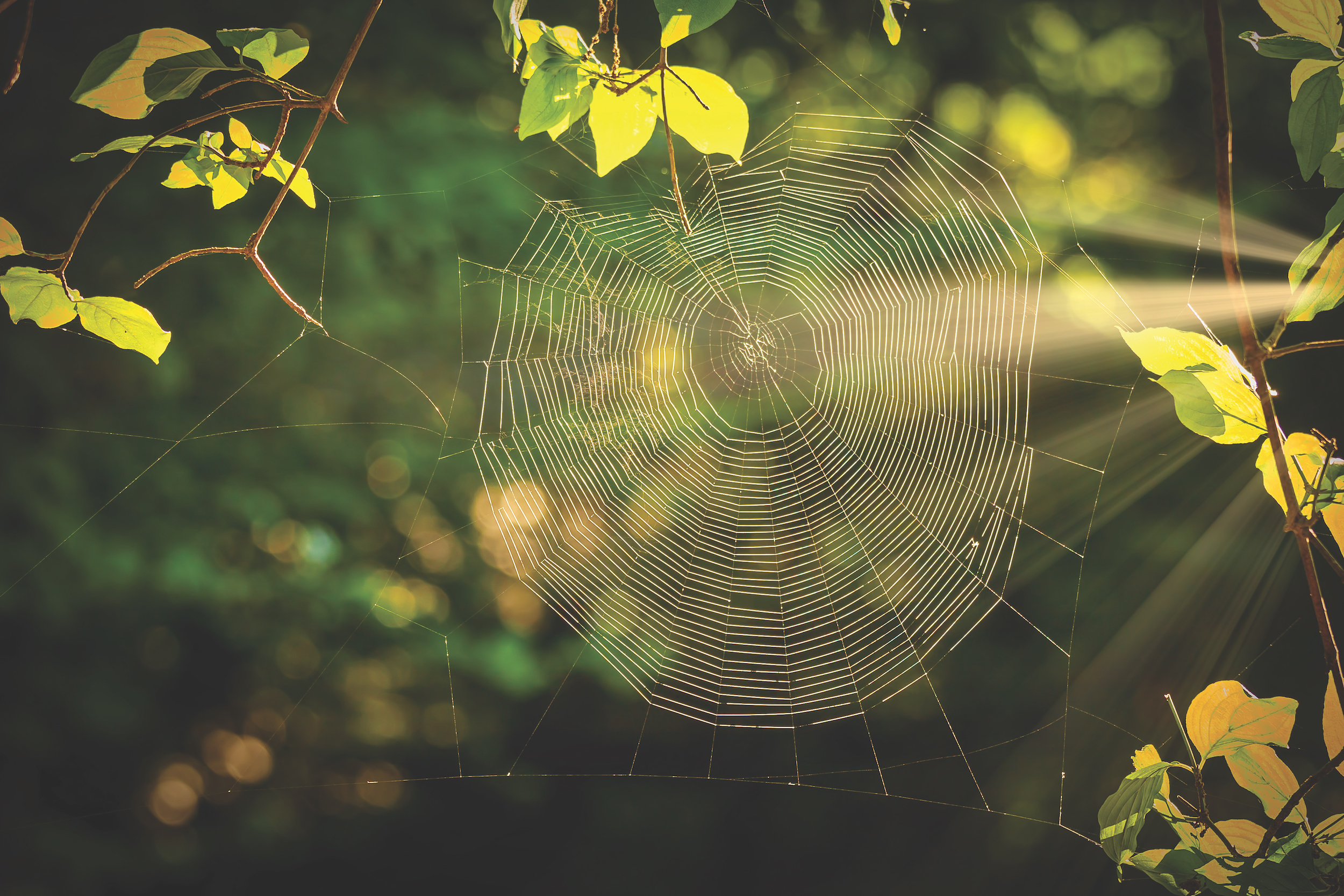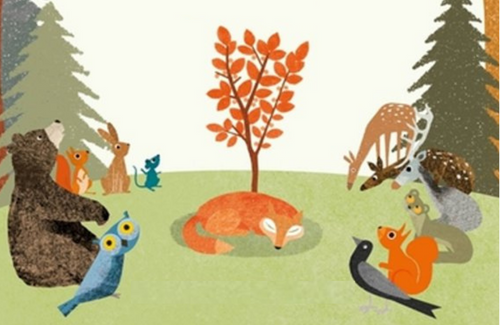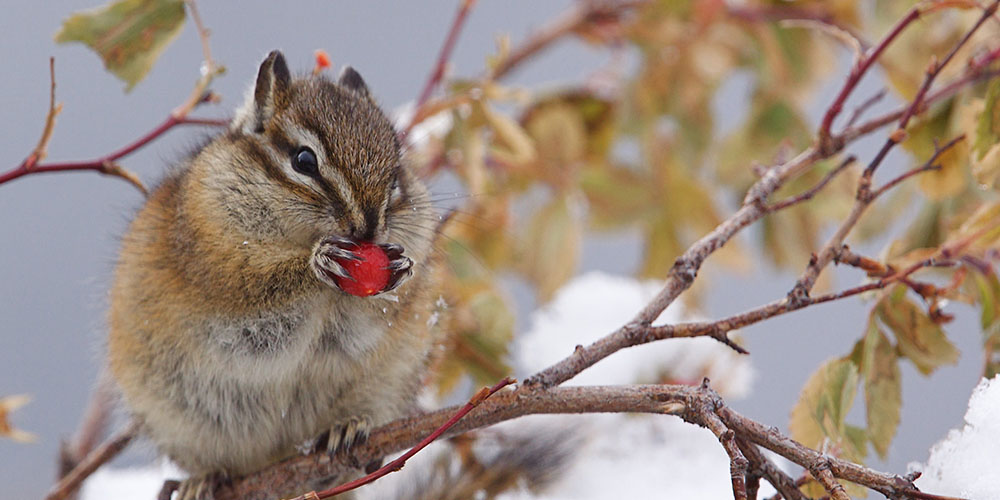Web of Life
By conducting research and modeling a food web, students take a close look at a forest ecosystem and discover ways that plants and animals are connected to one another. Although this activity focuses on forests, you can also use it to study other ecosystems, such as oceans, deserts, marshes, or prairies, by substituting the appropriate information.
Objectives
Students will
- Conduct research to learn how one organism is connected to other organisms in an ecosystem.
- Use a model to understand the interdependence of organisms in an ecosystem.
For the complete activity and more like this, purchase it from Shop.PLT.org as part of the Biodiversity Blitz activity collection and/or find out about professional development opportunities in your state.
Explore Your Environment: K-8 Activity Guide is a supplementary curriculum that is multi-disciplinary, with an emphasis on science, reading, writing, mathematics, and social studies.
Each activity displays explicit connections to practices and concepts expected by the following national academic standards so teachers can easily see where the materials will fit into their lesson plans:
- Next Generation Science Standards (NGSS)
- Common Core Toolkit, includes
- English Language Arts (CCSS.ELA)
- Mathematics (CCSS.MATH)
- College, Career, and Civic Life Framework for Social Studies (C3)
Our professional development further demonstrates these connections, as well as to state and local standards, contact your state coordinator.
The Memory Tree
Teaching young children about the loss of a loved one can be a difficult topic. In this picture book, a fox lives a long and happy life in the forest, but he is now ready to sleep and closes his eyes forever. As the fox’s friends begin to share memories and tell stories, a tree starts to grow taller and stronger with every memory.
Bird Count
This book is a fictional narrative about a girl who participates in the Audubon Bird Count each year. The story follows Ava, her mother, and their team leader, Big Al, through a full day of the Bird Count.
A Day in a Forested Wetland
A Day in a Forested Wetland Grades K-3 Written by: Kevin Kurtz Illustrated by: Sherry Neidigh Published by: Arbordale, 2018 ISBN-13: 978-1628559125 Recommended Reading A continuation of Kevin Kurtz’s award-winning “A Day In” series once again delights readers with a rhythmic, scientifically-sound look into a typical day for the animals that call the soggy forest... Read more »
Tall Tall Tree
Tall Tall Tree Grades K to Grade 4 ISBN-13: 978-1584696018 Dawn Publications, 2017 Recommended Reading Teachers and parents alike can use this book, Tall Tall Tree written by Anthony Fredericks and illustrated by Chad Wallace, to take children on a virtual fieldtrip into the dense redwood forest. Not only will readers experience the grandiose... Read more »
Over and Under the Snow
Over and Under the Snow Grades K to Grade 4 ISBN-13: 978-0811867849 Chronicle Books LLC, 2011 Recommended Reading Even if children do not live in an area that experiences seasonal change, videos and books about snow can help students imagine and understand something they have never experienced first-hand. In this book, a young girl... Read more »
EE Resources
NGSS Correlations for “Web of Life”
Download “Web of Life” NGSS Correlations which includes a guiding question, science connections found in the activity, and explicit NGSS correlations. The Next Generation Science Standards (NGSS) define what students should know or be able to do at the end of instruction. This activity provides students opportunities to explore the three dimensions of science to... Read more »
Food Web, a Science Trek Video
PBS LearningMedia’s 4-minute video Food Web, from Idaho public TV’s Science Trek series for grades K-6, illustrates how energy from the sun moves through the food chain, the various factors that contribute to a food chain, and where humans fit into it. Support materials include a set of discussion questions and alignment to standards, including... Read more »
Adopt a Tree Journal
Encourage children to “adopt” a nearby tree. It could be a tree in their backyard, in a city park, on a street in their neighborhood, or at school. Ask students to keep a journal about their tree they have “adopted” to study. Share or adapt this Adopt a Tree Journal, suitable for grades 1-4, with your students.... Read more »
Podcast Series: Learning About Green Careers
Learn more about the work of a tree conservation ecologist in this episode from the podcast series Planted: Finding your roots in STEM Careers. Dr. Silvia Alvarez-Clare works at The Morton Arboretum, located 25 miles west of Chicago. She collaborates with individuals and institutions all over the world to save the brandegee oak (Quercus brandegeei) from extinction. Dr.... Read more »
Foldable Paper Microscopes
Foldscope is a foldable microscope made mostly of paper that achieves the goal of being less than one U.S. dollar in parts to produce. These origami microscopes weigh less than 10 grams and provide the magnification power of your standard classroom microscope. Produced by Foldscope Instruments, the company’s mission is to produce low-cost scientific tools that... Read more »
PHYLO: The Ecosystem Trading Card Game
A study 20 years ago found that British kids were better at identifying Pokemon than real wildlife. So a Canadian professor of teaching has crowdsourced ideas and created a competitive card game that teaches kids about ecosystems. Learn more about this scientific Pokemon-type card game called Phylo: The Ecosystem Trading Card Game. Download rules and a starter deck... Read more »
Endangered Species Success Stories
Success Stories is an interactive map of the United States that documents the 40-year impact the Endangered Species Act (ESA) has had on preventing species extinction. Students in grade levels 6-12 can use this interactive map to learn more about endangered species. Developed by the U.S. Fish and Wildlife Service, the success stories map celebrates the... Read more »
Disneynature Explore
The free Disneynature Explore application for iPads and iPhones combines an augmented reality experience with animal behavior gameplay to encourage young students (grades PreK-3) and their families to get outside and connect with nature. In the app, 3D images of animals appear in the camera’s viewer, providing students with “wild adventures” in their own backyard.... Read more »
Seed Racers
Are you looking for a fun and interactive way to teach your students about seeds? Why not have your students play the Seed Racers game? In this simple point and click style game, students learn about the types, features, and dispersal methods of many different kinds of seeds. Students work through multiple missions to collect... Read more »
NatureWorks Video Series
Discover the natural world and the connections that make nature work in this 16-part video series for students in grades 3-6. Developed and produced by New Hampshire Public Television and the Squam Lakes Natural Science Center, each episode is fifteen minutes long and helps students explore the ways living things interact with the environment. NatureWorks... Read more »
Nature’s Alphabet
Where is A? Where is Z? Under a rock? In a tree? Go outside and see. Invite children to use this pictorial guide to discover the alphabet in nature.
Color the World!
Coloringnature.org offers more than 500 realistically illustrated coloring pages that can be downloaded and printed for use in PreK-8 classrooms. Choose from categories such as amphibians, reptiles, mammals, birds, insects, animal homes, biomes and habitats, and trees. Consider pairing the pages with PLT activities as diagrams, models, or assessment tools.
Earth from Space
This Smithsonian Institution website provides students (and teachers!) access to views of conditions and events on earth that are nearly impossible to document from the Earth’s surface. The site proves interactive; explaining how satellite imagery is gathered and used to better understand the world around us.
Ordinary Extraordinary Junco
Introduce yourself to one of North America’s most common groups of songbirds, the Juncos. Readily observed in backyards, city parks, and forests alike, these little gray birds—sometimes called “Snowbirds”—can be easily overlooked. But for scientists who study animal behavior, ecology, and evolutionary biology, the Junco is a rockstar. Use these video shorts from The Junco... Read more »
Bryce Canyon Electronic Field Trip
Take an electronic field trip inside Utah’s Bryce Canyon National Park. During this live, one-hour podcast, students will learn about the importance of the park, hunt for signs of land and aquatic dinosaurs, explore “hoodoos” (unique limestone formations), and see animals that live in this extreme environment.
Plant for the Planet Video
Inspired by Wangari Maathai, 9-year-old Felix Finkbeiner founded “Plant for the Planet” and has planted more than 500,000 trees in Germany which he says will help sequester carbon and reduce greenhouse gas emissions. Watch Felix’s video, part of the Young Voices on Climate Change series, to learn about his efforts to plant trees for a... Read more »
Endangered Species Interactive Map
The US Fish and Wildlife Service has launched a web-based interactive map with information about endangered species success in every state: stories of species making strides towards recovery, audio interviews and podcasts with biologists about on-the-ground endangered species conservation, and more.
American Bird Conservancy Video: Go Birding, Save Species!
Enjoy this one-minute video featuring our favorite feathered friends. Can you identify all of these spectacular birds? Visit www.conservationbirding.org for the full species list. The video was created to showcase the American Bird Conservancy’s web site that enables birders to find birding routes and lodges that support habitat protection. Go birding to celebrate Earth Day!
Encounters: Wild Explorer
The public radio program Encounters: Radio Experiences in the North explores the natural history of Alaska and the Far North. An accompanying website offers K-12 teachers links to the episodes as well as resources, such as slideshows, videos, and sound clips, introducing the animals and habitats of the regions: beavers, bears, caribou, humpback whales, boreal... Read more »
WildLab Bird
A free app that can be downloaded onto any Apple device (try iBird Lite for Android). Use WildLab Bird to learn the basics of bird identification. This application uses audio, photographs, maps, and the process of elimination to help identify over 200 bird species. Sightings can also be entered into a national bird watching database for... Read more »
Dawn Publications – If You Love Honey
“If you love honey, then you must love honeybees” so says Dawn Publications’ children’s book, If You Love Honey. If You Love Honey takes readers on an exploration through the benefits and beauty that prevail through the relationships of living, breathing organisms that co-exist in nature. The colorful illustrations and simple concepts help young minds... Read more »
Conservation Connect LIVE! Broadcasts
Connect your students with conservation professionals using the U.S. Fish and Wildlife Service’s new broadcast series. Visit the FWS website to pick one of an existing dozen videos to use in your education and conservation programming. Approximately 8 additional videos will be added over the next 8 months. New broadcasts take place at 2pm Eastern... Read more »
Login to download supporting materials such as appendices and teaching tips.
Login
 Get this Guide
Get this Guide
 Find Training
Find Training



